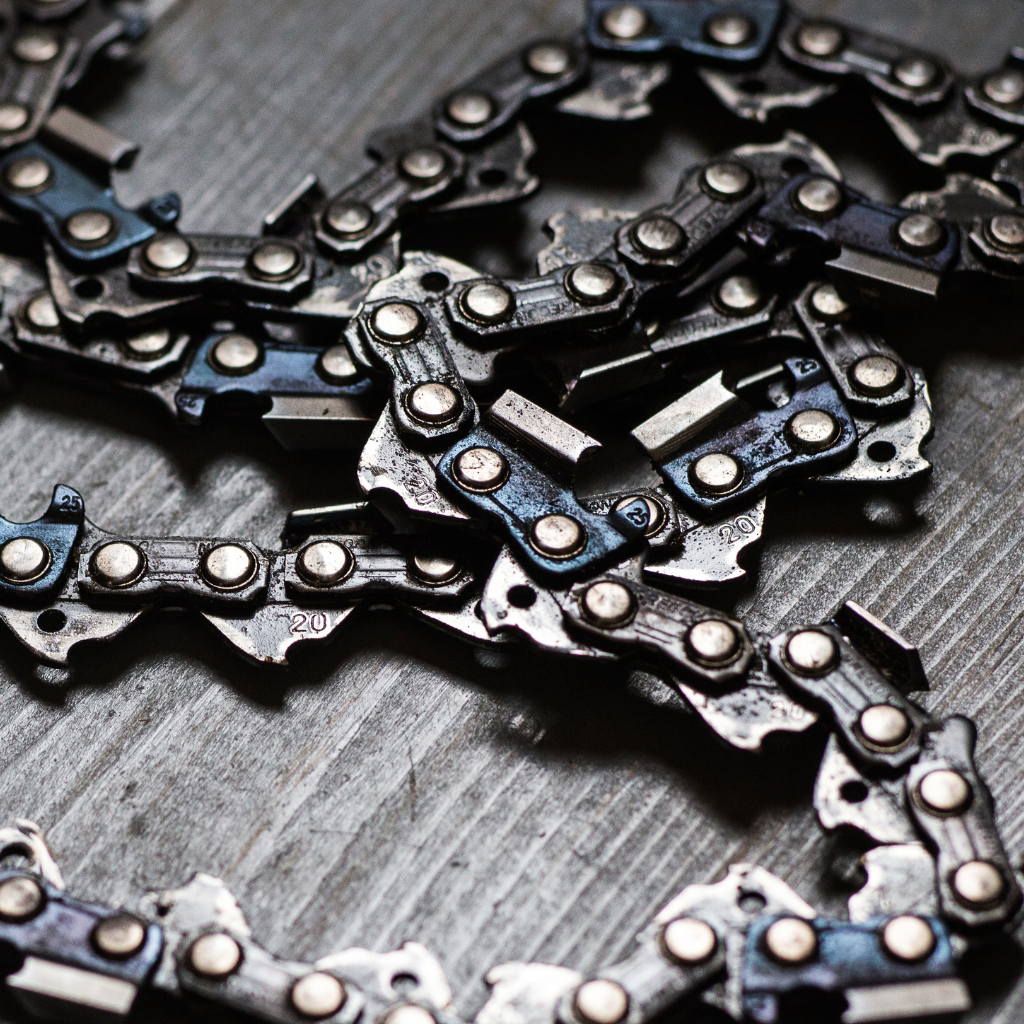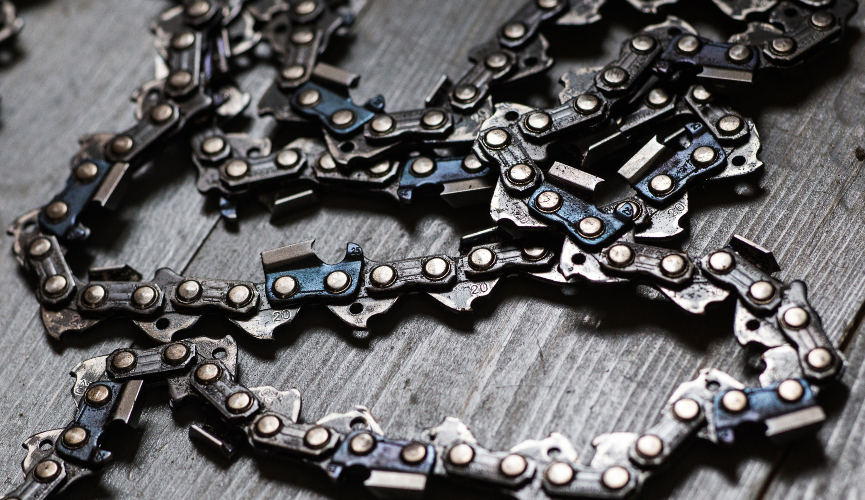How To Shorten A Chainsaw

Key Takeaways
- Understanding the different sizes and components of a chainsaw chain is crucial before attempting to shorten it.
- Proper tools and safety equipment, including a chainsaw file, depth gauge, and chain breaker, are necessary for the task.
- Measuring and marking the chain accurately is key to ensuring a successful and safe chain shortening process.
When it comes to using a chainsaw, having the right length of chain is crucial for safe and efficient operation. However, there may be times when you need to shorten your chainsaw chain to fit a specific job or to replace a damaged section. While this may seem like a daunting task, with the right tools and techniques, it can be easily accomplished.
Understanding Chainsaw Chain Sizes Before attempting to shorten a chainsaw chain, it is important to understand the different sizes and components of the chain. Chainsaw chains are made up of a series of links, each consisting of a drive link, a tie strap, and a cutting tooth. The length of the chain is determined by the number of drive links, which can vary depending on the make and model of the chainsaw.
Tools and Safety Equipment Shortening a chainsaw chain requires a few basic tools, including a chainsaw file, a depth gauge, and a chainsaw chain breaker. It is also important to wear proper safety equipment, such as gloves and eye protection, to prevent injury while working with the sharp chain. Once you have gathered your tools and safety equipment, you can begin the process of measuring and marking the chain to determine where to make the cut.
Before you go out and buy a new chain at the store, see if you can shorten the current one. It's a handy skill to have, especially if you need to replace a worn chain, or downsize it to a smaller bar size. Alright, let's get ready to make the adjustment.
Understanding Chainsaw Chain Sizes
Chain Pitch
The pitch of a chainsaw chain is the distance between any three consecutive rivets divided by two. It is an essential measurement that determines the compatibility of a chain with a chainsaw's guide bar. The most common pitches are ¼ inch, ⅜ inch, and .325 inch.
Chain Gauge
The gauge of a chainsaw chain refers to the thickness of the drive links. It is an important measurement that determines the strength and durability of the chain. The most common gauges are .050 inch, .058 inch, and .063 inch.
Drive Link Count
The drive link count of a chainsaw chain is the number of links that fit into the guide bar's groove. It is another crucial measurement that determines the compatibility of a chain with a chainsaw.
The drive link count is typically an even number and ranges from 40 to 120.
Understanding these three measurements is crucial when it comes to shortening a chainsaw chain.
It ensures that the chain is compatible with the chainsaw's guide bar and helps to maintain the chainsaw's performance and safety. Always consult the chainsaw's manual or a professional before attempting to shorten a chainsaw chain.

Tools and Safety Equipment
Required Tools
Before attempting to shorten a chainsaw chain, it is important to gather the necessary tools. These tools include a chainsaw file, a depth gauge, and a chainsaw chain breaker.
The chainsaw file is used to sharpen the teeth on the chain, while the depth gauge is used to ensure the teeth are filed to the correct depth. The chainsaw chain breaker is used to remove links from the chain to shorten it.
Safety Gear
When working with a chainsaw, safety should always be a top priority. It is important to wear protective gear such as eye and ear protection, gloves, and a hard hat.
Additionally, it is recommended to wear chainsaw chaps or pants to protect against accidental cuts. It is also important to make sure the chainsaw is properly maintained and in good working condition before use.
By using the required tools and wearing the appropriate safety gear, the process of shortening a chainsaw chain can be done safely and effectively.
Measuring and Marking the Chain
Determining the New Length
Before shortening chainsaw chains, it is important to determine the new length of the chain. To do this, measure the length of the chain currently on the chainsaw and subtract the desired amount.
For example, if the current chain length is 20 inches and the desired length is 18 inches, the new length of the chain will be 2 inches shorter. This is great if you have worn out chain links on the saw chain.
Marking the Chain
Once the new length has been determined, it is important to mark the chain before shortening it. This will ensure that the correct amount of chain is removed and that the cutting teeth are evenly spaced.
To mark the chain, use a marker or a piece of chalk to make a small mark on the chain at the point where it needs to be shortened. It is important to make sure that the mark is clearly visible and that it is made on both sides of the chain to ensure accuracy.
After marking the chain, use a file guide to file down the depth gauges on the chain. This will ensure that the cutting teeth are at the correct height and that the chain will cut smoothly and efficiently.
Overall, measuring and marking the chain is an important step in shortening a chainsaw chain. By following these steps, the user can ensure that the chain is shortened accurately and that it will perform as expected.
How To Shorten A Chainsaw Chain
When it comes to shortening a chainsaw chain, there are two main steps: removing links and rejoining the chain. Here is a breakdown of each step:
Removing Links
Before removing any links, it is important to measure the length of the chain and determine how many links need to be removed. It is recommended to remove an equal number of links from both sides of the chain to maintain balance on the shortened chain.
To remove links, use a chain breaker tool to push out the pins that hold the links together. Be sure to follow the manufacturer's instructions for your specific tool. Once the pins are removed, the links can be separated and removed from the chain.
Rejoining the Chain
After the necessary links have been removed, the chain can be rejoined. To do this, first, ensure that the chain is properly oriented with the cutting teeth facing forward. Then, use a chain joining tool to press the pins back into the links. Again, be sure to follow the manufacturer's instructions for your specific tool.
Once the pins are pressed back in, use pliers to bend the ends of the pins to secure them in place. Be sure to check that the chain is properly tensioned before using the chainsaw.
Overall, shortening a chainsaw chain can be done with the right tools and some patience. It is important to follow the manufacturer's instructions and take safety precautions to avoid injury.
Testing and Troubleshooting
Test Fitting
Before using a chainsaw, it is essential to ensure that the chain is the correct length for the bar. A chain that is too long or too short can cause damage to the chainsaw and pose a safety hazard.
To test the fitting of the chain, place the chain onto the bar, ensuring that the drive links are seated correctly in the sprocket. Then, pull the chain around the bar and ensure that it fits snugly without any slack.
Adjusting Tension
Once the chain has been test-fitted, it's time to adjust the tension. The tension of the chain is critical to ensure that it operates properly and does not come off the bar during use. To adjust the tension, loosen the nuts on the side cover of the chainsaw and adjust the tensioning screw until the chain is snug against the bar. Then, tighten the nuts on the side cover, being careful not to over-tighten.
Safety Check
After adjusting the chain tension, it's essential to perform a safety check before using the chainsaw. Check the chain brake to ensure that it is functioning correctly and will stop the chain in case of kickback.
Also, check the chain oiler to ensure that it is working correctly and lubricating the chain. Finally, check the air filter and clean or replace it if necessary.
By following these steps, you can ensure that your chainsaw chain is the correct length, properly tensioned, and safe to use.
Final Say On Shortening Your Chainsaw
In most cases, you shouldn't really need to shorten your chainsaw. Simply purchase the chain size required for your chainsaw and you should be good to go. Don't over complicate it.

Carl Anderson
Carl Anderson is an avid outdoorsman with a keen interest in writing about and reviewing tools. He has over 20 years of writing experience and the only time he isn't feverishly typing away at his computer is when he's outside in nature working on his projects. You can learn more about him here.
Join our community!
Join to receive guides, insights, and the latest gardening deals!
